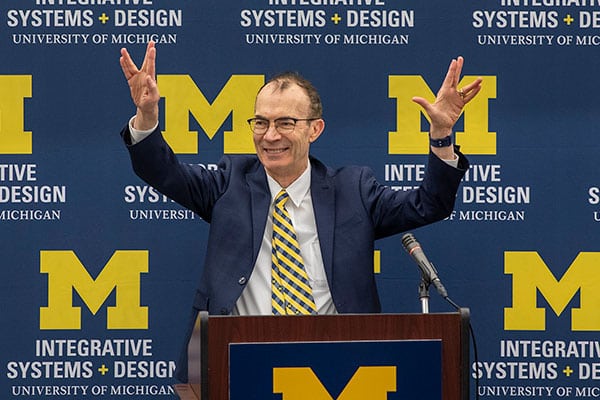Dr. Bordley, Program Director of Systems Engineering Design, ISD, has applied systems engineering throughout his life
An avid reader of science, history, economics and literature, Dr. Bob Bordley was the ultimate bookworm. To applied systems engineering, he first identified summer jobs as a shared interest between bookworms, the faculty, athletes, sci-fi fans, socialites, burnouts, smokers and other student groups. Having previously won numerous speaking competitions, he carefully prepared a speech outlining his plan. He then ran for student council president with the slogan, Tippecanoe and Square Root of Two, and won in a landslide. Before an audience of cheering students, his proud school counselor declared,”Bob Bordley has the potential to be President and win the Nobel Prize.”
Winning a full scholarship, he went on to earn undergraduate degrees in policy sciences, physics and electrical and systems engineering. Winning an NSF Fellowship, he went on to earn an MBA, an MS and a PhD in Operations Research for a total of six degrees by age 23.
Finding New Roads
While drawn toward academic research, he crossed the boundary to the commercial side. Legendary GM chairman Alfrad Sloan had carefully designed the boundaries between the different car divisions and the different staffs to create what was hailed as the modern corporation. But in Sloan’s time, there wasn’t much attention to GM’s interface with society.
Because of increasing concerns about how large companies were interfacing with society, GM created a Societal Analysis Department composed of psychologists, sociologists, anthropologists, economics and operations researchers. This is where Dr. Bordley started his career at GM.
But emerging computer control technologies and robotics required the incorporation of new technologies into automotive engineering based on mechanical engineering. Recognizing how the Apollo space program successfully integrated, GM hired former NASA administrator Bob Frosch as vice president. Calling Dr. Bordley a “polymath”, Frosch recruited him into a handful of people who launched Project Trilby. Trilby’s mandate was to integrate systems engineering into vehicle design, just as it had been integrated into rocket design.
Building Bridges
As Dr. Bordley noted, systems engineering decomposes a lofty goal into achievable tasks for diverse specialist teams. After architecting the appropriate division of labor among teams, the systems engineer manages each team’s requirements and builds the appropriate interfaces (bridges) between each team. Just as Societal Analysis focused Dr. Bordley focused on building bridges between GM and society so Trilby focused him on building the right bridges between different engineering groups.
Dr. Bordley then went on to build bridges between Research and Development and the rest of the company (receiving the GM Award of Excellence), between marketing and design (receiving the President’s Council Award), between GM’s sales division and its dealerships, between quality engineering and the service parts organization (winning the Chairman’s award) and between GM’s car divisions (where he developed the secret sauce for a revenue management system).
Dr. Bordley took time off to join the National Science Foundation where he directed the Decision, Risk and Management Sciences program and managed the private sector initiative, an NSF program to create bridges between industry and universities. He joined leaders in many fields in successful lobbying to move the social and behavioral sciences from being a sub-division of biology to a directorate co-equal with biology in NSF.
Upon retiring from GM, Dr. Bordley joined Booz-Allen-Hamilton to take his skills with systems engineering in the commercial sector and apply them back to the defense sector. Echoing the words of a GM executive director, an Army Chief would say, “Bob has a unique gift for seeing the solution to a chaotic situation.”
Bridging Awards
Dr. Bordley recently received the Frank P. Ramsey Medal of lifetime achievement in decision analysis where he was cited for his “enviable record of research contributions, many of them (such as target-oriented utility), directly inspired by his industry experience….His research includes a focus on incorporating important aspects of the decision environment (e.g., targets, suspicion, time delays, problem framing) into the decision analysis toolkit and on expanding the toolkit by developing alternative, theoretically equivalent decision analysis methods (e.g., visual decision trees, creation of hybrid solutions, dynamic morphing of communications based on the individual’s cognitive style.”
Dr. Bordley’s contributions also led to his being named a fellow of INFORMS, the American Statistical Association and the Society of Decision Professionals. He also received the decision analysis best publication award and the Distinguished Educator Award of the Industrial Engineering and Operations Management Society.
Dr. Bordley continues to focus on bridging divisions within different disciplines and theory and practice with an emphasis on both “rigor and relevance”.
